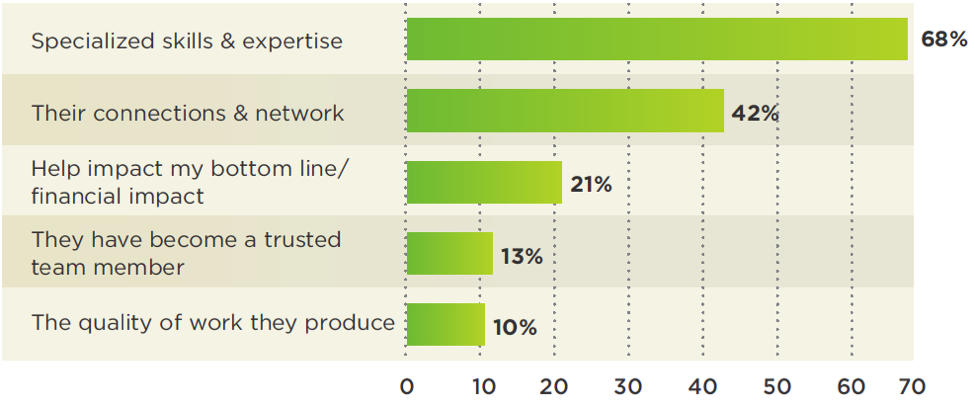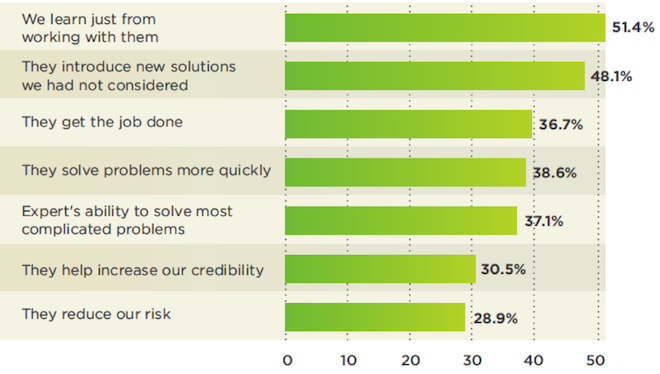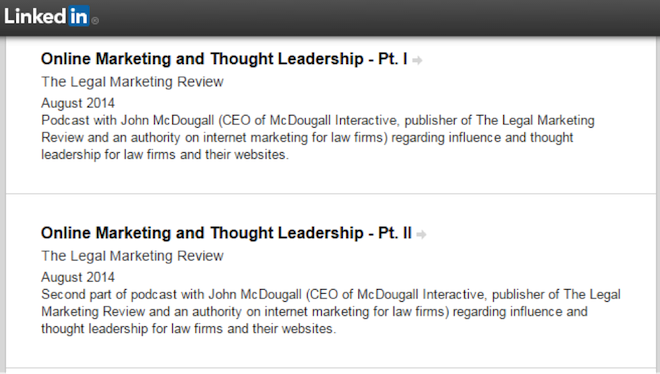
There are very few people in the world that like to make or receive cold calls. Inbound marketing uses content to generate numerous impressions of your business, and encourage the prospect to call you. Thought leadership content is utilized a lot less when doing cold calls and prospecting, but before we can begin using that approach, you need to dig into the idea that your job is to educate, as well as solve problems, not “sell.”
-
Educate, don’t sell
The Internet has radically changed the selling process. People have so many options for researching, that they often know who they are going to hire before making a call. You should be part of the conversation to such a level that customers feel like they know you personally, as well as what it might be like to work with you through your blog and content. Or you can continue to mostly pound the phone and wait for referrals.
Referrals, ironically, will check out the content on your site 80% of the time – based on a two year Hinge Marketing study of over 1,000 buyers of professional services – before truly believing that the person referring them is giving good advice.
I still believe in some cold calling too, because there are times when I want to target an exact list of niche companies, but I never just call and ask if they want to work with us. I always lead by being helpful and sharing our content, an upcoming event or an opportunity to co-create content together. Essentially, this ties inbound and outbound marketing together.
When I do meet with people, I rarely use a presentation, and mostly ask and answer questions. This brings me right to the heart of solving their problems and increasing ROI – which is the main reason they will pull the trigger initially.
Lee W. Frederiksen, Ph.D., wrote a book called Inside The Buyer’s Brain that talks about what buyer’s value. As you can see, specialized skills and expertise are critical.

Lee Frederiksen also adds the following insights:
While problem solving was the most common reason that buyers hired a Visible Expert, that was not the benefit they extolled in the end.
Instead, buyers rank new learning as their biggest payoff. Initially, clients don’t seek out Visible Experts because they want to be educated. But in retrospect, they identify learning as a top benefit of the engagement. For these clients, working with a Visible Expert not only solved their problem, but also helped them see their path forward more clearly.
Benefits of working with a visible expert

The moral of the story is not to underestimate how important educational content is in the sales and consulting process.
-
Build Relationships by co-creating content
In the world of selling and keeping clients, the relationship is everything. My father owned the 6th largest advertising agency in New England, and if I had a penny for every time he told me it’s all about building relationships, I could be retired. He’s even come into my office to speak to my entire staff about this topic.
One of the ways that I build relationships is by podcasting with prospects and co-creating content with them. A lot of times, I don’t even follow up specifically to try and turn it into a sale. I simply build lots of relationships and content at the same time!
One example of this is attorney Andrew Laver, former President of the Philadelphia Legal Marketing Association Chapter. After doing a podcast interview with him, he then went about listing it under his publications on his LinkedIn profile.
James Matsukas of Pierce Atwood Law Firm is another example of building relationships with our clients. We met during one of my talks at the New England Legal Marketing Association event, where I then invited him to do a podcast with us. He later put the links to our site, the legalmarketingreview.com, on his bio page. Several months later he became a client, and one of our favorites at that.
Just last week one of my colleagues, John Cass, and I took Jim to lunch. We did this because we want to do a better job on his account, and sometimes feel that things are not moving fast enough. After an amazing first half hour of talking about jazz and food, we ultimately got to the heart of what would make our relationship better.
Sometimes you have to go old school and get face-to-face, and we find consistently that co-creating content creates a unique bond.
-
Follow up regularly using new content
Co-creating content isn’t going to work for every industry. From our experience, one thing that does work consistently is to follow up regularly with prospects by sending them links to blog posts that you have written and various types of helpful content.
Back in the 90’s, my sister was working in sales at McDougall Associates Advertising, and she followed-up regularly by sending other people’s articles to prospects in the mail. She had great success with it because it showed the prospect that she was being genuinely helpful.
It is much more powerful when you combine a follow-up with your own thought leadership. For example, some banks buy “canned” content that they didn’t write and use it successfully to nurture their existing client base. It works, even with content that they didn’t create, but it works better with your own unique content.
In regard to following up, I recently asked legal business development coach Stewart Hirsch if following up with content is one of his recommendations. He agreed and said:
If there’s something that a lawyer has written that has value to another person, passing that on is really valuable and blogs are such an easy way to provide that value.
But to send a blog without having a reason to send it is almost like being in a room, networking in a setting where somebody’s just passing out their card. Just handing them out without thinking about who they’re handing them to or why, when there’s something relevant that’s been written, it can be very valuable.
In the end, it also has to be relevant and put into context. You just can’t blast out random posts to a prospect. If you can figure out what is concerning them and line up your content with their business goals, then you will have a much greater impact.
With this in mind, never call a prospect and say, “I just wanted to check in”. Instead, say something more along the lines of, “I wanted to let you know about this recent blog post that addresses some of the things we last discussed.”
Finding the right people to get your content to will be another big part of the challenge. Using social selling skills, such as digging deep into the organization beyond just the typical person you would contact, can be a great way to increase your chances of connecting.
The CEO might not want to meet with you directly, but by reaching out to them on a social platform like LinkedIn and sharing a helpful piece of content, they might tell you someone else at their organization who would.
No matter what industry you are in, we can all agree that selling has changed. The big question is whether or not your salespeople have the developed sales strategies that will help them avoid looking like an old school used car salesman.
What are some of your favorite modern sales tips for success?

